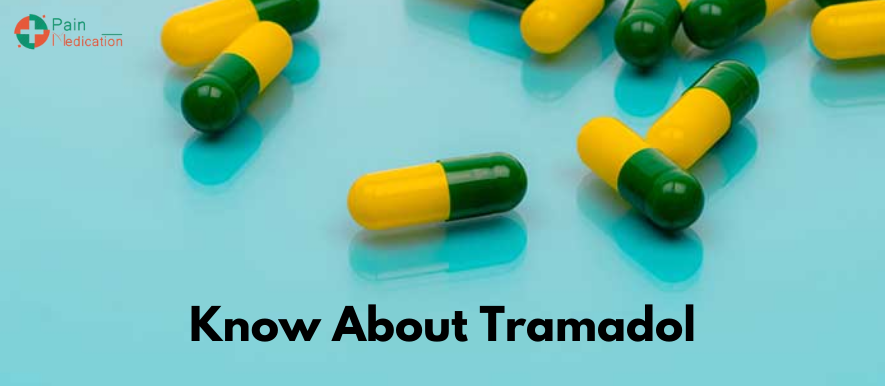Category
- Buy Adderall Online
- Buy Adipex Online
- Buy Alprazolam Online
- Buy Ambien Online
- Buy Ativan Online
- Buy Carisoprodol Online
- Buy Clonazepam Online
- Buy Codeine Online
- Buy Darvocet Online
- Buy Demerol Online
- Buy Diazepam Online
- Buy Dilaudid Online
- Buy Fioricet Online
- Buy Gabapentin Online
- Buy Hydrocodone Online
- Buy Hydromorphone Online
- Buy Klonopin Online
- Buy Lexapro Online
- Buy Lorazepam Online
- Buy Lorcet Online
- Buy Lortab Online
- Buy Meridia Online
- Buy Methadone Online
- Buy Modafinil Online
- Buy Norco Online
- Buy Opana ER Online
- Buy Oxycodone Online
- Buy Oxycontin Online
- Buy Percocet Online
- Buy Phentermine Online
- Buy Roxicodone Online
- Buy Soma Online
- Buy Suboxone Online
- Buy Subutex Online
- Buy Tapentadol Online
- Buy Tramadol Online
- Buy Valium Online
- Buy Viagra Online
- Buy Vicodin Online
- Buy Xanax Online
- Buy Zolpidem Online

Deals & Discounts
Use Coupon Code
SAVE10

Which type of medication is Tramadol?
Tramadol is a pain relief medication that can treat moderate to severe pain. The medication starts working for pain relief, usually within an hour, with its immediate-release formulation. It is also available as an injection and in combination with acetaminophen. Tramadol extended-release formulation comes for long-term pain relief with its analgesic effects lasting from 10 to 12 hours.
Tramadol is a mu-opioid receptor agonist and also a selective serotonin reuptake inhibitor or an SNRI. The liver converts tramadol to a much stronger opioid agonist, O-desmethyl tramadol.
The medication got patented in the year 1963, and a West German pharmaceutical company launched it under the name “Tramal” in the year 1977. The United States Drug Enforcement Administration approved it in the mid-1990s.
Tramadol is also available as a generic medication in the United States and sold under many different brand names, including Ultram and Ultram ER. The usual wholesale cost of the medication is less than $0.05 per pill in the country as of 2018.
The medication is a widely used opioid in the United States for the purpose of pain relief. Tramadol has more than 15 million prescriptions every year in the USA itself.
What are the medical uses of Tramadol?
The primary use of Tramadol is to treat mild, moderate, or severe degrees of pain. The medication can treat both acute and chronic pain conditions. The analgesic effects of its immediate-release formulation start within an hour and reach its peak in about two hours after oral administration of Tramadol.
On comparing with a dose-by-dose basis, Tramadol is one-tenth times as potent as morphine and equally potent as codeine and pethidine. It has equivalent effectiveness, like morphine for moderate degrees of pain. However, for severe pain, Tramadol is less effective than morphine.
The analgesic effects of Tramadol last for about six hours.
The United States does not approve Tramadol for fibromyalgia as of 2015. However, several small studies found out that the medication is an effective second-line treatment for Fibromyalgia.
Is Tramadol an Opioid?
Yes. Tramadol is an opioid medication that binds to the opioid receptors on the neurons. Apart from being an opiate, it is also a selective serotonin reuptake inhibitor or SNRI. The liver converts it into O-desmethyl tramadol, which is a stronger opioid that binds to the mu-opioid receptor.
What are the available dosage forms of tramadol?
The available tramadol dosage formulations include:
- Liquid tramadol
- Tramadol syrups
- Tramadol drops
- Elixirs
- Effervescent tramadol tablets and powder for mixing with water
- Tramadol capsules
- Immediate-release tramadol tablets
- Extended-release tramadol tablets
- Suppositories
- Compounding powder
- Tramadol injection
How does Tramadol Work to Relieve Pain?
Tramadol relieves pain by targeting a variety of different sites on the noradrenergic system, opioid receptor system, and serotoninergic system. The medication exists as a racemic mixture with positive enantiomer inhibiting serotonin reuptake and the negative enantiomer inhibiting noradrenaline reuptake. It does this by binding to and blocking the transporters.
Tramadol also functions as a serotonin releasing agent. Both positive and negative enantiomers of tramadol are agonists of the mu-opioid receptors, and its metabolite M1, known as O-demethylate, is also an agonist of the mu-opioid receptor and is six times more potent than the drug itself. All the effects of Tramadol synergistically work to induce pain relief.
Tramadol possesses the following actions:
- It is an agonist of the MOR (mu-opioid receptor) and a less potent agonist of DOR (delta opioid receptor) and KOR (k-opioid receptor).
- It is a serotonin reuptake inhibitor and norepinephrine reuptake inhibitor; thus, it’s an SNRI.
- It is an antagonist of the serotonin 5-HT-2C receptor.
- It is an antagonist of the M1 and M3 muscarinic acetylcholine receptor.
- It is an antagonist of the alpha-7 nicotinic acetylcholine receptor.
- It is a very weak antagonist of the NMDA receptor.
- It is an inhibitor of TRPA1.
What Conditions Contraindicate the use of Tramadol Medicine?
Tramadol contraindicates in people with:
- A deficiency of CYP2D6 enzyme as its crucial for the therapeutic effects of Tramadol, by enabling the metabolism of Tramadol to desmethyl Tramadol
- Pregnancy or lactation may cause reversible withdrawal effects in the newborn. A small study found that an increased risk of miscarriages existed. However, there are no major malformation risks associated with the use of tramadol during pregnancy. Another survey for lactating mothers found that infants breastfed on tramadol taking mothers had an exposure of about 2.88% of the total dose received by the mothers.
- Age above 65 years may have opioid-related adverse effects such as falls, sedation, cognitive impairment, and respiratory depression.
- Liver and kidney failure as tramadol gets metabolized in the liver and eliminated by the kidneys.
- Hypersensitivity to opioids, particularly tramadol, or any other inactive ingredients of the medication.
Are There any Adverse Effects of Using Tramadol?
As with other opioids, there are many adverse effects associated with the use of the medication. The most frequently reported tramadol side effects to include:
- Dizziness
- Nausea
- Dry mouth
- Abdominal pain
- Indigestion
- Constipation
- Vomiting
- Headache
- Drowsiness
- Vertigo
Compared to other opioid analgesics, Tramadol has lesser risks of respiratory depression and constipation.
Chronic administration of opioids may induce an immune tolerance; however, in contrast to other opioids, it enhances immune functions.
Long-term tramadol use at high doses causes physical dependence leading to withdrawal syndrome. The withdrawal symptoms include both the regular opioid withdrawal and serotonin-norepinephrine reuptake inhibitor withdrawal, including tingling, numbness, tinnitus, and paresthesia.
Psychiatric symptoms of withdrawal include paranoia, hallucinations, panic attacks, extreme anxiety, and confusion. The withdrawal typically lasts longer than that caused by other opioids.
What happens if a person overdoses tramadol?
Tramadol overdose can be fatal. If a person overdoses Tramadol, they could have depression, seizures, or addiction. Naloxone can partially reverse the toxic effects of an overdose, but it may increase the risk of seizures. Other manifestations of tramadol overdose include:
- Excessive somnolence
- Stupor
- Respiratory depression
- Skeletal muscle flaccidity
- Cold and clammy skin
- Constricted pupils
- Coma
- Bradycardia
- Cardiac arrest
- Hypotension
- Death
Many parts of the country have reported death cases with tramadol overdose. The majority of these fatal overdoses involve the use of both tramadol and alcohol. There are 21,649 emergency room visits in the year 2011 in the United States due to tramadol overdose.
A single or multiple overdoses with tramadol may be a lethal polydrug overdose, and it is vital to consult the regional poison control center.
Tramadol overdose treatment includes maintaining adequate ventilation and general supportive treatment. Employ supportive measures, including vasopressors and oxygen, to manage pulmonary edema and circulatory shock. In the case of cardiac arrest or arrhythmias, use defibrillation or cardiac massage.
What drugs interact with Tramadol?
Some frequently reported tramadol interactions to include:
MAO Inhibitors
Tramadol contraindicates in people using monoamine oxidase inhibitors or those have received them within the last 14 days of tramadol use.
Drugs lowering Seizure Threshold
Tramadol increases the potential for SSRIs (selective serotonin reuptake inhibitors), TCAs (tricyclic antidepressants), anti-psychotics, and other drugs reducing seizures threshold to cause convulsions. If a person is using tramadol concomitantly with any medication that affects the serotonergic neurotransmitters system, a health care provider should clinically observe the patient during initiation of treatment and increase of dosage.
CNS Depressants
Concurrently taking tramadol with other centrally acting drugs, including centrally acting analgesics, alcohol, psychotropic drugs, and opioids potentiate the central nervous system depressant effects of both the medications.
Carbamazepine
People taking carbamazepine may have significantly reduced the analgesic effects of tramadol as carbamazepine increases the metabolism of the medication.
Quinidine
Quinidine is a selective inhibitor of the CYP2D6 P450 isoenzyme that metabolizes tramadol to M1. So, the co-administration of quinidine and tramadol increases tramadol concentrations and reduces the levels of M1.
CYP2D6 and CYP3A4 inhibitors
Co-administration of CYP2D6 or CYP3A4 inhibitors such as fluoxetine, quinidine, paroxetine, amitriptyline (CYP2D6 inhibitors) or erythromycin and ketoconazole (CYP3A4 inhibitors) reduce the metabolic clearance of tramadol, thus increasing the severe effects of the medication including seizures and serotonin syndrome.
Cimetidine
Using tramadol and cimetidine together does not result in any significant changes in the pharmacokinetics of tramadol. There are no clinical studies showing alteration in the working mechanism of tramadol when used together with cimetidine.
Digoxin
Post-marketing studies of tramadol reveal several reports of digoxin toxicity.
Triptans
Based on tramadol’s mechanism of action and its potential for serotonin syndrome, it is advisable to take caution while co-administering tramadol and triptan.

Leave a Reply